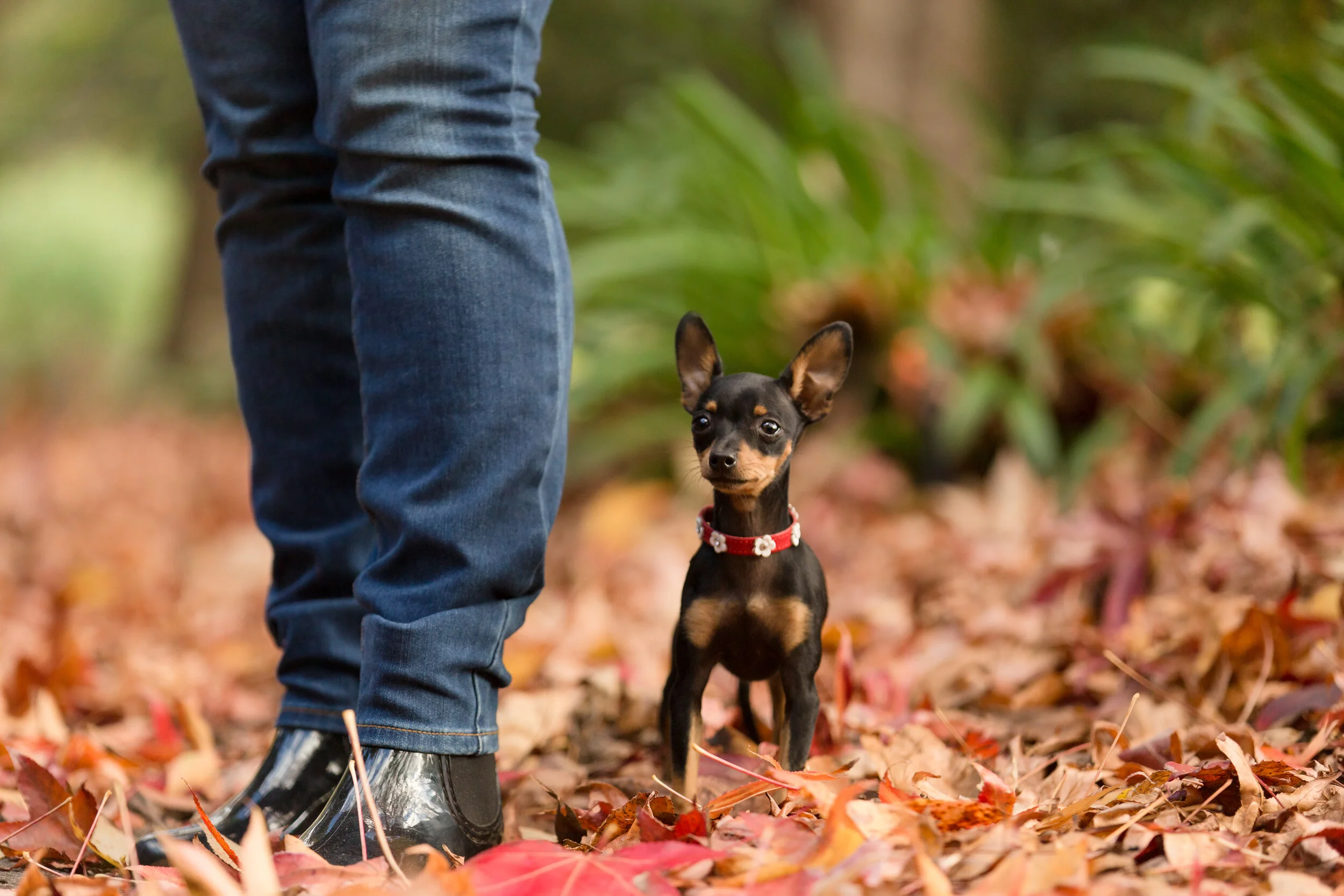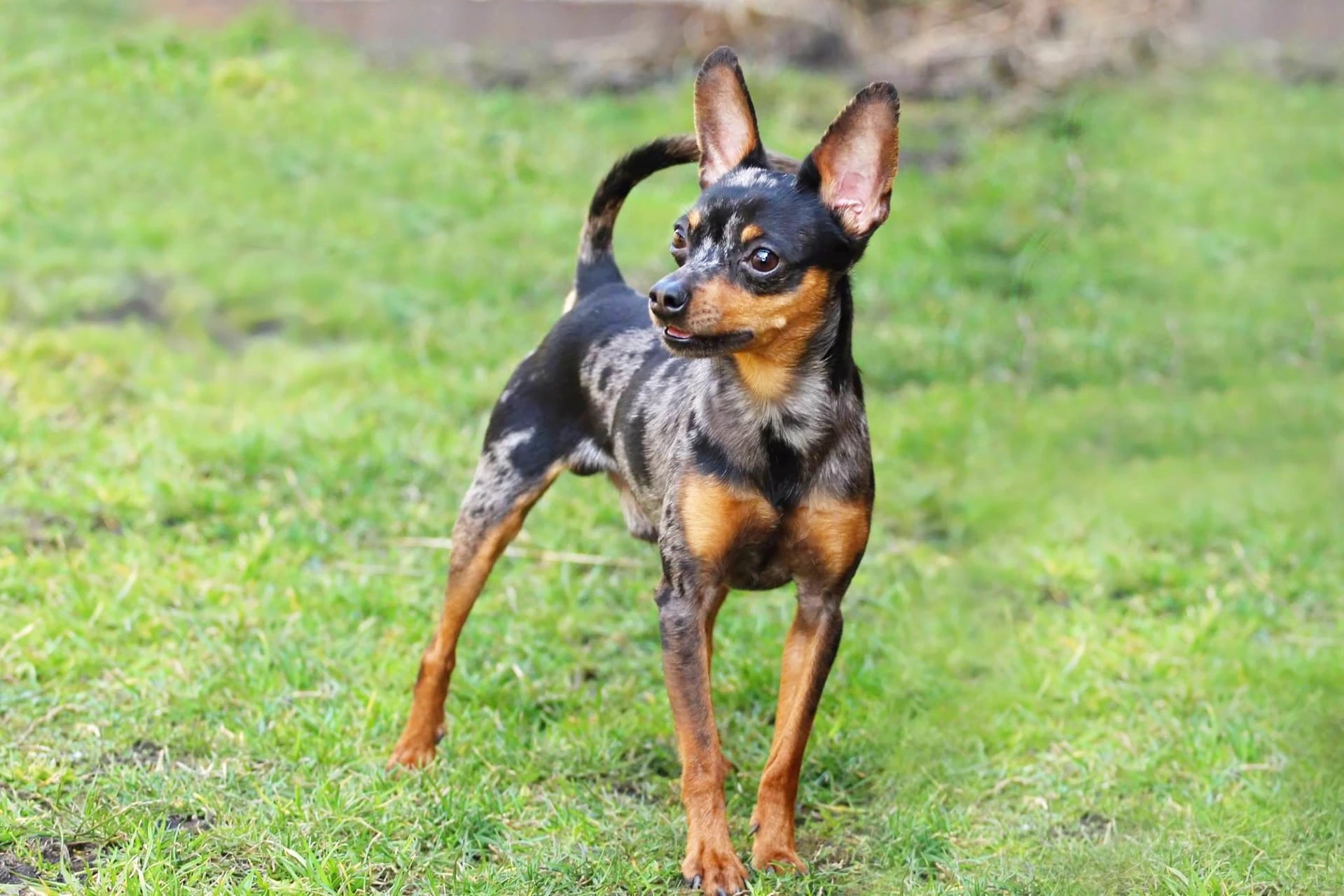In This Article
Are you interested in meeting a small, energetic, and affectionate dog? The Prague Ratter could be the perfect match for you!
This delightful canine companion possesses all the qualities needed to capture your heart instantly. It’s an excellent choice for urban residents, families, and anyone in search of a devoted pet. Join us as we explore more about this captivating breed.
Prague Ratter History
The Prague Ratter, also known as Pražský krysařík, is a breed largely unseen beyond its native Czech Republic. Noted as the world’s smallest dog breed by height, these tiny canines only reach 20-23 cm in stature.
Historically, the Ratter was a fixture in the rodent-plagued palaces of Central Europe during the Middle Ages. By the reign of Polish King Boleslaw II from 1058-1081, the breed was already well-established. The king became so enamored with these diminutive dogs that he imported two from Bohemia.
The breed’s popularity waned slightly with the arrival of the Miniature Pinscher, considered more fashionable at the time.
Nevertheless, the resilient Prague Ratters maintained their presence and saw a modest revival in the 1980s. Despite this, they continue to be a rare sight in the canine world today.
The Prague Ratter, hailing from the Czech Republic, boasts a storied history that stretches back to the Middle Ages.
Originally bred as a rat catcher, this breed played a crucial role in safeguarding homes and food supplies from rodents.
Beyond its utilitarian uses, the Prague Ratter was also a favored gift among nobility and royalty, gaining popularity across Europe.
As time progressed, the breed was overshadowed by the rising popularity of other small breeds, such as the Miniature Pinscher and the Chihuahua, leading to a period of decline.
In the 1980s, breed enthusiasts took steps to revive the Prague Ratter, rekindling interest and beginning selective breeding programs.
Since then, the breed has gradually regained its standing and is now once again gaining popularity.
Today, the Prague Ratter is cherished by a dedicated following, drawn to its endearing and affectionate character.
Prague Ratter Traits

1. General Appearance
The Prague Ratter features a nearly square-shaped, compact body.
There are distinct differences between the male and female forms of the breed.
2. Coat and Coloring
Frequently mistaken for a Chihuahua or Miniature Pinscher, the Prague Ratter sports a short, shiny coat.
Additionally, this breed features a moderate-length fringe on its ears, legs, and tail.
While black and tan is the most typical coat color for this breed, it can also appear in other hues such as brown and tan, blue and tan, lilac and tan, as well as yellow, pink, red, and merle.
3. Distinctive Physical Traits
Prague Ratters are characterized by their rounded skulls, dark, broadly spaced eyes, and triangular ears that stand erect naturally.
Their tails, which are held somewhat upright, may loop over their backs in a semi-circular shape.
Prague Ratter Temperament

Ratters are highly sociable dogs that flourish in strong, stable relationships with their owners. They relish attention and enjoy the company of children.
Nonetheless, their diminutive size necessitates careful supervision when they are interacting with young kids.
While they are generally amiable, Prague Ratters can be somewhat cautious around strangers and may feel threatened by other dogs, potentially leading to confrontations.
These dogs are well-suited to indoor and apartment living.
Although they are playful and energetic, Prague Ratters are also content to curl up on a lap during quieter moments.
Unlike some small breeds known for being noisy, Ratters are usually quite quiet.
Prague Ratter Care
1. Nutrition
Small dogs such as Ratters need more calories per pound of body weight compared to larger breeds.
Therefore, it is advisable to choose a diet formulated specifically for small breeds and tailored to your dog’s particular life stage.
These foods provide the right mix of nutrients and feature smaller kibble sizes, making it easier for Prague Ratters to chew and digest their meals.
It’s also important to monitor the amount of treats you give your Ratter.
Even a few small treats can quickly add up and contribute to weight gain.
2. Grooming
The grooming needs for a Ratter are fairly low-maintenance.
Typically, this breed just needs occasional brushing and a quick wipe-down with a damp cloth to remain clean.
Regular nail trimming and ear cleaning should also be included in their grooming routine.
Dental care is crucial for all dogs, encompassing both routine brushing at home and professional cleanings.
Due to their compact jaws and tightly spaced teeth, Prague Ratters are especially prone to dental problems, which may necessitate more frequent dental care starting from a young age.
3. Exercise
Prague Ratters don’t require intense exercise but do appreciate daily playtime and opportunities to scamper and frolic.
These energetic dogs delight in leaping up into the air and executing acrobatic maneuvers.
Some are even capable of climbing trees! Therefore, it’s important to keep an eye on them during these activities and ensure outdoor play occurs in a secure area.
4. Training
Ratters are quick learners and typically react positively to training and commands.
The most effective training method for this breed involves positive reinforcement, such as treats or a beloved toy, which helps in teaching them basic obedience and tricks.
Prague Ratter Health Problems

Prague Ratters are generally healthy dogs, but like all breeds, they have a few health issues to which they may be predisposed.
Here are some common health problems that may affect Prague Ratters:
- Dental Problems: Due to their small mouths and crowded teeth, Prague Ratters are prone to dental issues such as periodontal disease, which can lead to tooth loss if not properly managed.
- Patellar Luxation: This condition involves the dislocation of the kneecap, which is common in small breeds. It can cause discomfort and affect the dog’s ability to walk.
- Heart Issues: Small breeds can sometimes face various cardiac issues, including heart murmurs and valve diseases.
- Eye Problems: They may be susceptible to eye conditions like progressive retinal atrophy, which can lead to vision loss, or cataracts.
- Hypoglycemia: Especially in smaller and younger dogs, low blood sugar levels can be a concern and need to be monitored.
Regular veterinary check-ups and a healthy lifestyle can help manage and prevent some of these issues, ensuring a Prague Ratter leads a long and healthy life.
Prague Ratter FAQ
Is a Prague Ratter a chihuahua?
No, a Prague Ratter is not a Chihuahua. Although they are both small breeds and may look somewhat similar, they are distinct and separate breeds with different origins and characteristics.
The Prague Ratter, also known as the Pražský krysařík, is believed to have originated in the Czech Republic and has a history dating back several centuries in Central Europe. It was traditionally bred for catching rats and as a companion dog. In contrast, the Chihuahua originates from Mexico and is also a very old breed but with its own unique lineage and history.
Are Prague ratters good dogs?
Yes, Prague Ratters are generally considered good dogs, especially for families or individuals looking for a small, lively companion.
Do Prague ratters shed?
Yes, Prague Ratters do shed, but their shedding is generally considered to be minimal compared to many other dog breeds. Because of their small size and short coat, the amount of hair they lose is less noticeable.
Regular grooming, such as brushing a few times a week, can help manage and reduce the shedding by removing loose hairs and distributing skin oils throughout their coat, keeping it healthy.



